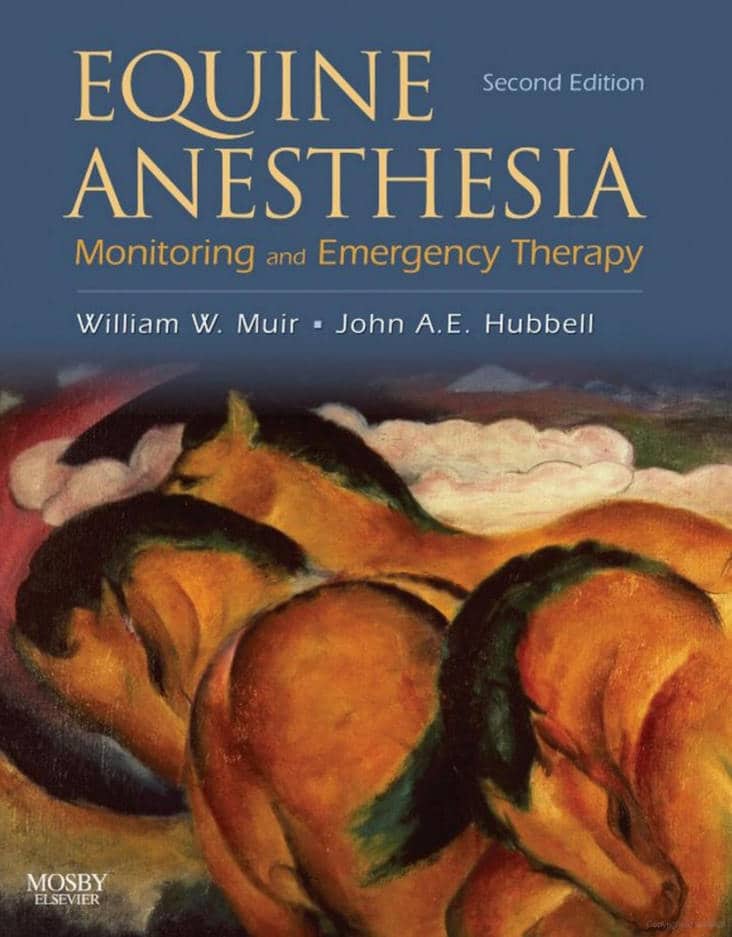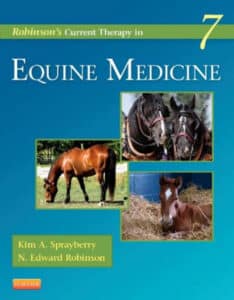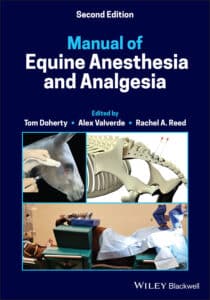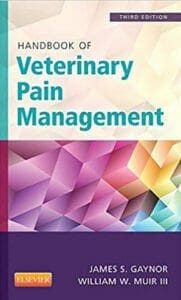
By William W Muir and John A E Hubbell
Equine Anesthesia Monitoring and Emergency Therapy. All veterinary team members involved in the everyday care of horses that require anesthesia or special emergency care will benefit from this reliable and inclusive resource. This text provides all of the information needed to prepare, conduct, and monitor the administration of drugs in order to produce safe and effective anesthesia, treat pain, respond to adverse effects, and perform and monitor emergency and critical care treatment. It is the most comprehensive and detailed book available on these subjects, addressing the needs and concerns of practitioners in both hospital and field settings.

Features
Features:
- Discusses all aspects of equine anesthesia, including history, physiology, pharmacology, drug dosages, patient preparation, induction-maintenance-recovery of anesthesia management of potential complications, and more.
- Provides a detailed review of the respiratory and cardiovascular physiology of the horse.
- Provides thorough coverage of preoperative pain management in horses.
- Covers emergency medical care and managing anesthetic complications in both hospital and field situations.
- Includes information on the latest anesthetic drugs, including safe and effective protocols for different procedures, and the most up-to-date monitoring techniques.
- Each contributor is a recognized expert in his or her respective equine specialty, renowned for clinical as well as academic and research expertise.
- A complete update of all drug information and pain management techniques.
- The very latest research findings and clinical applications of anesthetic agents and techniques.
- The most recent developments in post-anesthetic care and monitoring.
- A chapter on intravenous anesthetic and analgesic adjuncts to inhalation anesthesia.
- A chapter on anesthesia and analgesia for donkeys and mules.
- A chapter on perioperative pain management.
- Many new illustrations as well as tables, graphs, boxes, key points, and summaries that make information instantly accessible.
Table of Contents
Table of Contents:
-
- History of equine anesthesia
- The respiratory system
- The cardiovascular system
- Stress associated with anesthesia and surgery
- Physical restraint
- Preoperative evaluation: general considerations
- Venous and arterial catheterization and fluid therapy
- Monitoring anesthesia
- Principles of drug disposition and drug interaction in horses
- Anxiolytics, nonopioid sedative-analgesics, and opioid analgesics
- Local anesthetic drugs and techniques
- Intravenous anesthetic drugs
- Intravenous anesthetic and analgesic adjuncts to inhalation anesthesia
- Tracheal and nasal intubation
- Inhalation anesthetics and gases
- Anesthetic equipment
- Oxygen supplementation and ventilatory support
- Anesthesia and analgesia for donkeys and mules
- Peripheral muscle relaxants
- Perioperative pain management
- Considerations for induction, maintenance, and recovery
- Anesthetic-associated complications
- Cardiopulmonary resuscitation
- Anesthetic protocols and techniques for specific procedures
- Anesthetic risk and euthanasia















![Ettinger’s Textbook of Veterinary Internal Medicine 9th Edition [PDF+Videos] Ettinger’s Textbook of Veterinary Internal Medicine 9th Edition [True PDF+Videos]](https://www.vet-ebooks.com/wp-content/uploads/2024/10/ettingers-textbook-of-veterinary-internal-medicine-9th-edition-100x70.jpg)

![Textbook of Veterinary Diagnostic Radiology 8th Edition [PDF+Videos+Quizzes] Thrall’s Textbook of Veterinary Diagnostic Radiology, 8th edition PDF](https://www.vet-ebooks.com/wp-content/uploads/2019/09/textbook-of-veterinary-diagnostic-radiology-8th-edition-100x70.jpg)






